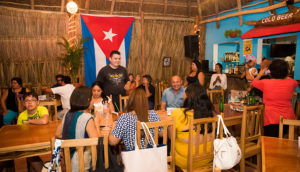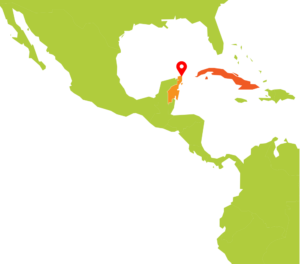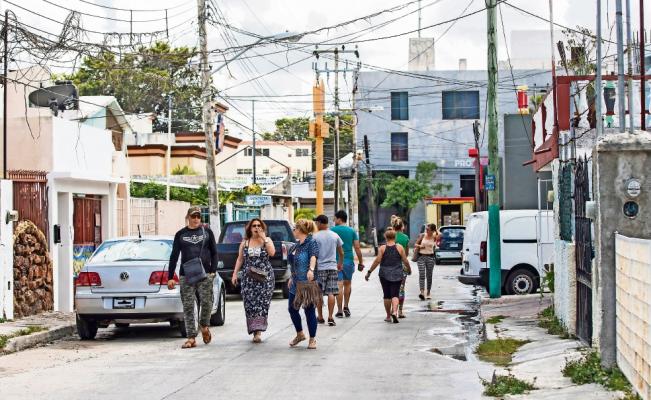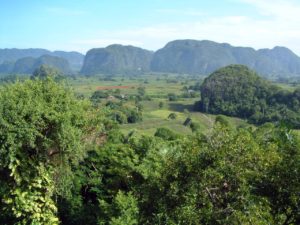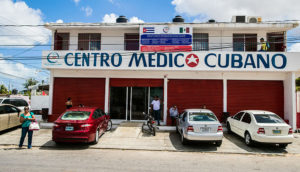
The Cuban Medical Center is in downtown Cancun, Quintana Roo. It was created by Cuban doctors living in Mexico and serving both Mexicans and Cubans.
When a Cuban is asked about Mexico, he responds that they were awakened with ranchera music on the island. That the oldest program on Cuban radio is called Mexico, his passions, in the province of the Holy Spirit. They talk about the passage of their liberators, José Martí in the 19th century, and Ernesto Guevara de la Serna and Fidel Castro leaving Tuxpan, Veracruz. That Mexico and Cuba have always been connected. In Mexico they find their new roots reflected in their Caribbean memories.
The number of Cubans living in Mexico increased 560% from 2010 to 2016, that is from 4 33 to 22 thousand 604. The North American Research Center PEW explains that two-thirds of Cubans who enter the United States do it for Mexican territory . That means that from 2014 to 2016, 80,000 Cubans crossed Mexican soil to the neighboring country.
They arrive in Mexico by plane, by land crossing the southern border, or by sea reaching the Yucatan Peninsula. Those who do not achieve the American dream have stayed to find options. 80,000 Cubans crossed the country between 2014 and 2016.
In 560%, the number of Cubans residing in Mexico increased from 2010 to 2016.
“The Cuban population in Mexico has grown a lot. In the hotel zone there are a lot of Cuban dancers, “explains the choreographer who has been a resident for nine years and has been Mexican for five years and married to a Mexican.
“I walk among you like nothing, even better than in Cuba,” says Yosbel, who first came alone to Mexico and a year later brought his family to Cancun, Quintana Roo. The first time he thought about migrating, he pointed to the United States, but the options were made available in Mexico. With a work permit and being a chef, he got a job quickly and now rents and brings his family little by little from Cuba. First was Playa del Carmen, then Chetumal and now Cancun. Yosbel explains that the Cuban is looking for work everywhere because the entry into Cuba is not the same as in other parts of the world: “Ten dollars, average salary. With 10 dollars you do not live. Unfortunately you have to leave the family and go chambear, as you say “.
The first registry of Cuban migrants to Mexico is detailed at the beginning of the last century, after the island’s independence, explains Dr. Liliana Martínez, coordinator and writer of the book Cubanos en México, edited by the Latin American Faculty of Social Sciences (Flacso ).
After the revolution of 1959, In those more than 50 years left more than one million 200 thousand people. The Cuban community in the United States is the fourth largest Hispanic migrant group after Mexicans, Puerto Ricans and Salvadorans, with 2 million people.
The average age of the Cuban migrant is 32 years. With a degree completed, a small percentage more men than women. They get work in less than a year and their main area of studies is humanities and arts; Then engineering, industry and construction, and then social sciences, business education and law.

The musical group, Los hurricanes del Caribe, travels around Quintana Roo playing clubs, hotels and restaurants. Some of them take up to 20 years in Mexico.
In the triangle that forms in the division of the streets Uxmal, Tulum and Chichen Itzá, in the center of Cancun, lies the Cuban community
Which has grown the most in recent years. In the same measurement period, from 2010 to 2016, the Cuban population in Quintana Roo increased by 710%. In this state a quarter of the total population is concentrated. Through the streets of this neighborhood there are no fondas or meals, but paladares and Cuban coffee. The hotels in the area, with capacity for 100 people, are maintained with 80% of the rooms occupied. All are Cubans who have just arrived or who come to make purchases and then sell in Cuba.
The neighbors of the area tell that little by little they were making of the streets and that now it is easier to see to happen a Cuban than to a Mexican. The incomes in the area range from 3 thousand to 7 thousand pesos a month. There are departments with the Cuban flag and give sporadic accommodation. “In that department, Cubans come and go every now and then,” says Carlos, a neighbor on Ceibo Street in downtown Cancun.
The Cuban adjustment act Dry feet, wet feet, came to an end earlier this year. Hundreds of Cubans were detained on Mexican frontiers, both in the south, in Chiapas, and in the north, in Tamaulipas, waiting for some response from the United States government.
“The same situation we have in Mexico is in Panama and Ecuador. All this after putting an end to the law of dry feet, wet feet. It has put a bottleneck of the region of Central America. The phenomenon of migration will continue because the Cubans want to leave Cuba in search of better life and liberties, both economic and political, “explains Iván Hernández Carrillo, Secretary General of the Trade Union Association dependent on Cuba, from the island.
Mexico is no longer a place of passage for the tens of thousands of Cuban migrants trying to reach the United States. “We were born in Cuba but Mexico is our second homeland since the revolution,” said Cuban trumpeter Rafael Morales, who has lived in a climate similar to his native country for more than 20 years.
The Cuban in Mexico lives it by finding similarities of their home, giving meaning to their destiny, which apparently was not what they expected.
LOS CUBANO-MEXICANOS. Los que no llegaron a los Estados Unidos.
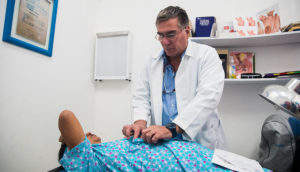
El Dr. Israel Ramos es uno de los fundadores del Centro Médico. Llegó a nuestro país hace seis años al ser invitado a un congreso y en ese momento encontró oportunidad de trabajar y se quedó.
Cuando se le pregunta a un cubano sobre México, responde que ellos en la isla se despertaban con música ranchera. Que el programa más viejo en la radio cubana se llama México, sus pasiones, en la provincia del Espíritu Santo. Hablan sobre el paso de sus libertadores, José Martí en el siglo XIX, y Ernesto Guevara de la Serna y Fidel Castro saliendo de Tuxpan, Veracruz. Que México y Cuba siempre han estado conectados. En México encuentran sus nuevas raíces reflejadas en sus recuerdos caribeños.
El número de cubanos residentes en México aumentó 560% de 2010 a 2016, es decir de 4 mil 33 a 22 mil 604. El Centro de Investigación Norteamericano PEW explica que dos terceras partes de los cubanos que entran a Estados Unidos lo hacen por territorio mexicano. Eso quiere decir que de 2014 a 2016, 80 mil cubanos cruzaron suelo mexicano con destino al país vecino.
Ellos llegan a México en avión, por tierra cruzando la frontera sur, o por mar llegando a la Península de Yucatán. Quienes no logran el sueño americano se han quedado a encontrar opciones. 80 mil cubanos cruzaron el país entre 2014 y 2016.
En 560% aumentó el número de cubanos residentes en México de 2010 a 2016.
“La población cubana en México ha crecido mucho. En la zona hotelera hay mucho cubano, bailarines”, explica el coreógrafo que desde hace nueve años es residente y desde hace cinco es mexicano y casado con una mexicana.
“Yo ando entre ustedes como si nada, hasta mejor que en Cuba”, dice Yosbel, quien primero llegó solo a México y un año después se trajo a su familia a Cancún, Quintana Roo. La primera vez que pensó en migrar lo hizo apuntando a Estados Unidos, pero las opciones se le facilitaron en México. Con permiso de trabajo y siendo chef, logró trabajo rápidamente y ahora renta y trae a su familia poco a poco de Cuba. Primero fue Playa del Carmen, luego Chetumal y ahora Cancún. Yosbel explica que el cubano busca trabajo en todos lados porque el ingreso en Cuba no es igual que en otros lugares del mundo: “Diez dólares, salario promedio. Con 10 dólares no se vive. Desgraciadamente uno tiene que dejar a la familia y salir a chambear, como dicen ustedes”.
El primer registro de migrantes cubanos a México se tiene detallado a principios del siglo pasado, después de la independencia de la isla, explica la doctora Liliana Martínez, coordinadora y escritora del libro Cubanos en México, editado por la Facultad Latinoamericana de Ciencias Sociales (Flacso).
Después de la revolución de 1959, En esos mas de 50 años salieron más de un millón 200 mil personas. La comunidad cubana en Estados Unidos es el cuarto grupo migrante hispano más grande después de los mexicanos, puertorriqueños y salvadoreños, con 2 millones de personas.
El promedio de edad del migrante cubano es de 32 años. Con licenciatura terminada, un pequeño porcentaje más de hombres que mujeres. Consiguen trabajo en menos de un año y su principal área de estudios es humanidades y artes; luego ingeniería, industria y construcción, y después Ciencias Sociales, enseñanza comercial y Derecho.
En el triángulo que se forma en la división de las calles Uxmal, Tulum y Chichen Itzá, en el centro de Cancún, radica la comunidad cubana
que más ha crecido en los últimos años. En el mismo periodo de medición, de 2010 a 2016, la población cubana en Quintana Roo aumentó 710%. En este estado se concentra una cuarta parte de la población total. Por las calles de este barrio no hay fondas o comidas corridas, sino paladares y café cubano. Los hoteles de la zona, con capacidad para 100 personas, se mantienen con 80% de los cuartos ocupados. Todos son cubanos que acaban de llegar o que vienen a hacer compras para después vender en Cuba.
Los vecinos de la zona cuentan que poco a poco se fueron haciendo de las calles y que ahora es más fácil ver pasar a un cubano que a un mexicano. Las rentas de la zona van de los 3 mil a los 7 mil pesos al mes. Hay departamentos con la bandera cubana y dan alojamiento esporádico. “En ese departamento entran y salen cubanos a cada rato”, dice Carlos, un vecino en la calle Ceibo, en el centro de Cancún.
El acta de ajuste cubana Pies secos, pies mojados, llegó a su fin a principios de este año. Con ello cientos de cubanos se quedaron detenidos en las fronteras mexicanas, tanto en la sur, en Chiapas, como en el norte, en Tamaulipas, esperando alguna respuesta por parte del gobierno de Estados Unidos.
“La misma situación que tenemos en México está en Panamá y Ecuador. Todo esto después de poner fin a la ley de Pies secos, pies mojados. Ha puesto un cuello de botella de la región de Centroamérica. El fenómeno de migración va a continuar porque los cubanos quieren irse de Cuba en busca de mejor vida y libertades, tanto económicas como políticas”, explica Iván Hernández Carrillo, secretario General de la Asociación Sindical dependiente de Cuba, desde la isla.
México dejó de ser un lugar de paso para las decenas de miles de migrantes cubanos intentando llegar a EU. “Nacimos en Cuba pero México es nuestra segunda patria desde la revolución”, define el trompetista cubano Rafael Morales, quien lleva más de 20 años viviendo en un clima parecido al de su país natal.
El cubano en México se la vive encontrando similitudes de su hogar, dándole sentido a su destino, que al parecer no era el que esperaban.
Agencies/ElUniversal/Internet Photos/Excerpts/ Arnoldo Varona/TheCubanHistory.com
THE CUBAN HISTORY, HOLLYWOOD.



